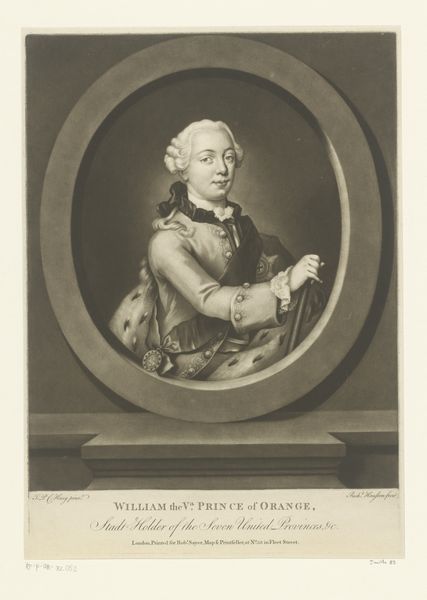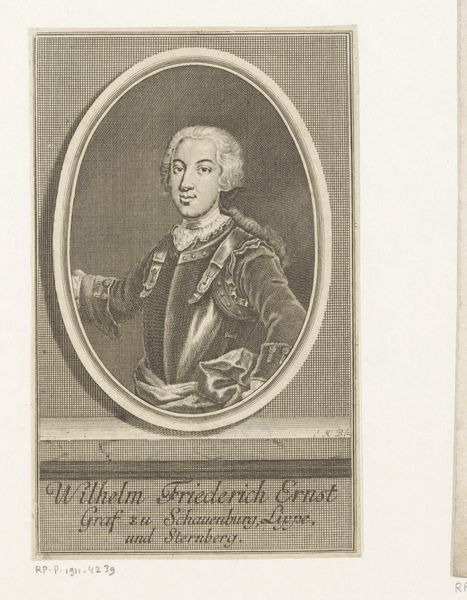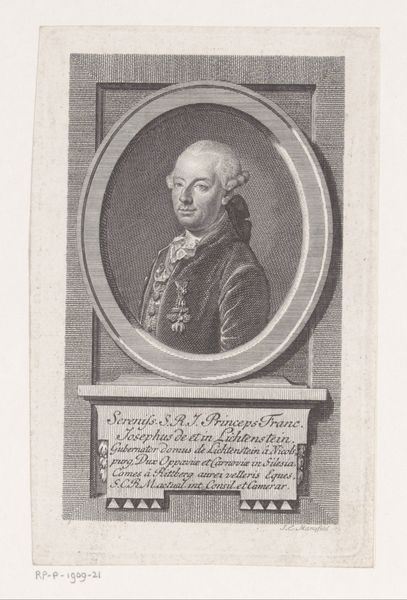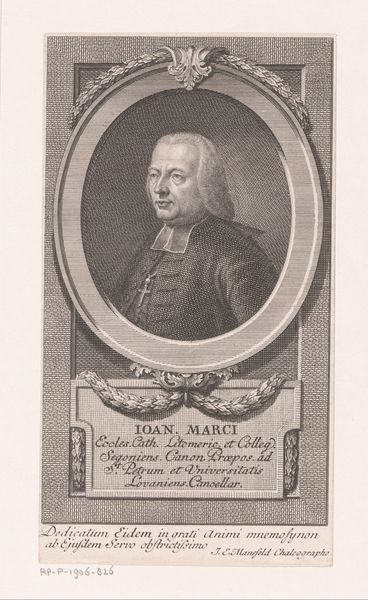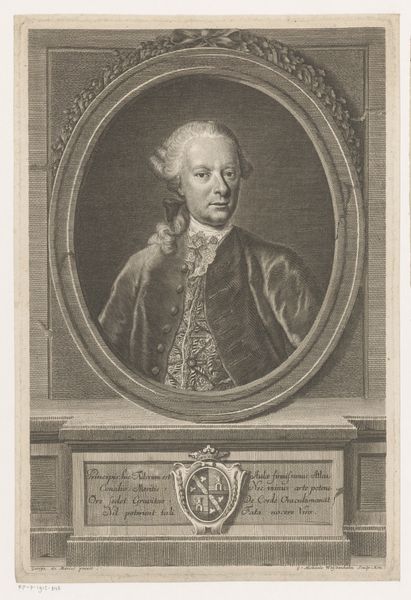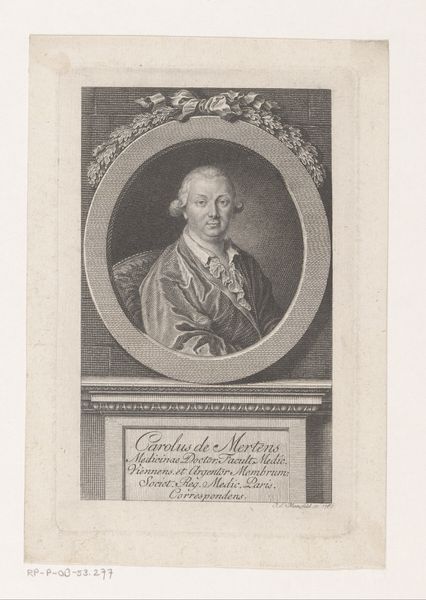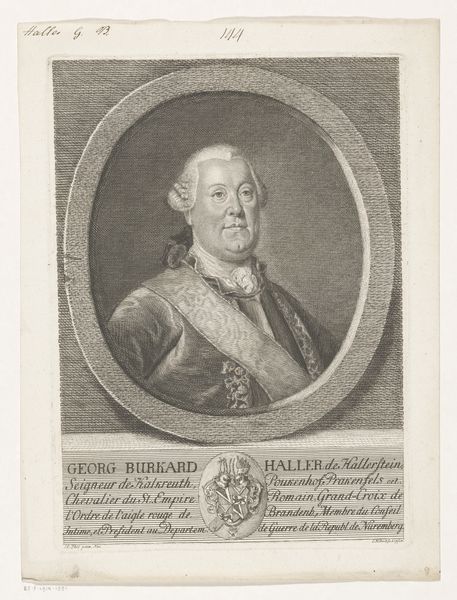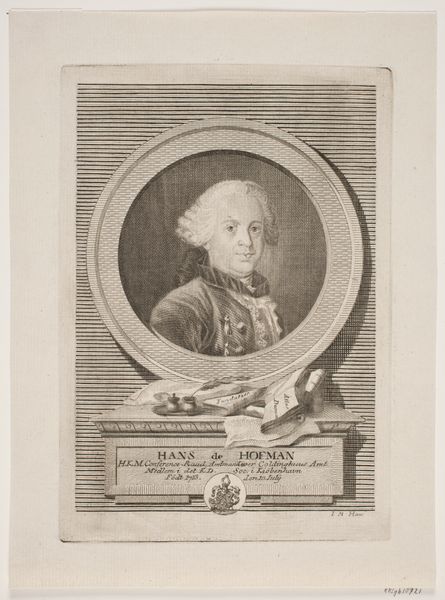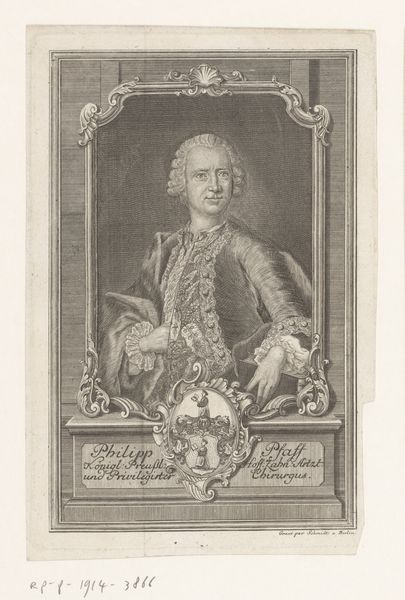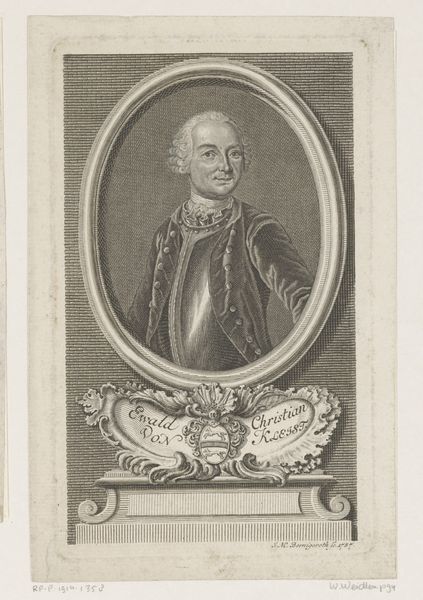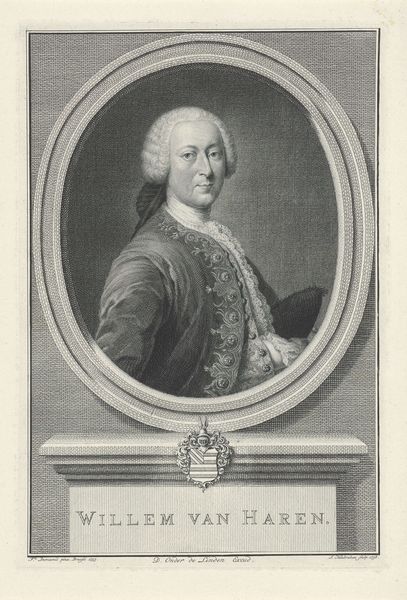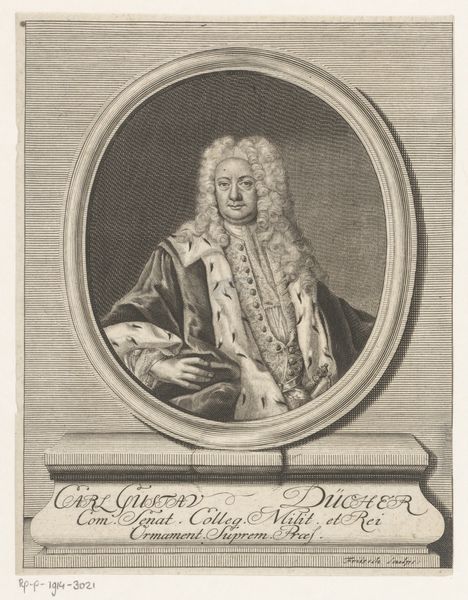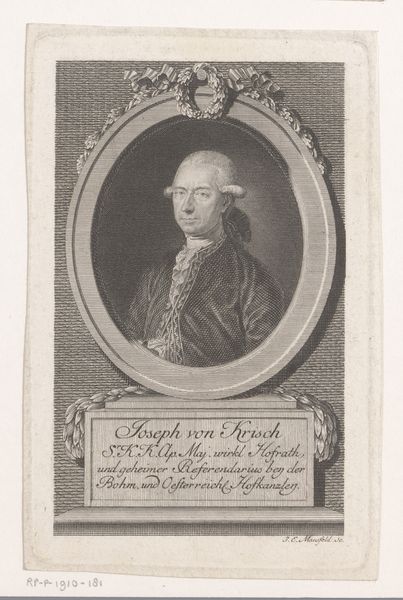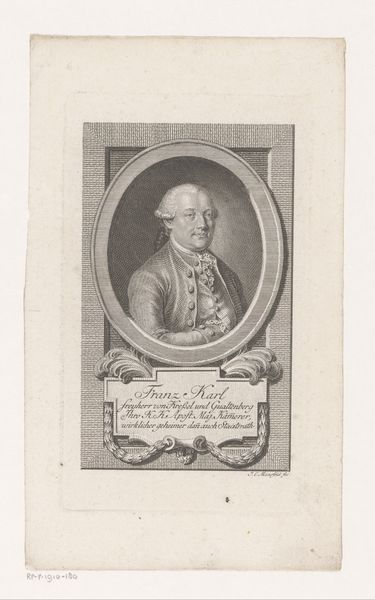
Dimensions: height 158 mm, width 94 mm
Copyright: Rijks Museum: Open Domain
Curator: Immediately, I'm struck by the formality and maybe, a touch of the melancholic? There's a stillness in his eyes. Editor: This engraving, completed around 1778 by Johann Ernst Mansfeld, offers a portrait of Friedrich Wilhelm Weiskern. It is rendered in the Baroque style. Looking deeper though, it does appear the subject doesn't exactly enjoy being the sitter! Curator: Baroque, you say? Tell me more about this period and Weiskern himself, why do you see his gaze in a critical light? Editor: Well, situating this within its social context, the Baroque period witnessed a shift in the social function of portraits from mere likeness to social statements, often communicating power and authority, that certainly impacted the dynamics of gender, class, and race as markers of social capital. And yes, one might say he is merely having a pensive look, though I see something… unenthused? His legacy may cast some insight as to the context surrounding the piece! Curator: I suppose you have a point there. And what does his gaze mean? A touch of resistance against the period's artifice, perhaps? And how does that frame tie into his character in your view? Editor: Maybe it does, I wonder to myself, if this oval frame wasn’t so elegantly floral it might appear like bars surrounding Weiskern? A little caged you could imagine… it also lends him importance, separates the personage from their immediate surroundings so one might even get the sense the engraver admired Weiskern. The man himself looks tired… Did he spend all night up writing satires and social critique for an upcoming theatre show? One has to wonder if he took any joy! Curator: Ha! It sounds as though that does frame Weiskern and perhaps his entire oeuvre. This is very different when understanding Weiskern’s work—satirical, indeed—so in this Baroque style, do you think it may hint at what Weiskern fought to achieve in this era of heightened drama and tension in Europe’s kingdoms? Editor: Exactly! I always find it’s those tiny cracks, those supposed ‘flaws’ that reflect real meaning within art, those moments a real truth seeps in and it becomes magic! Curator: Absolutely! It reminds us to challenge narratives but recognize that there are things being critiqued with every medium! A potent reminder of art's critical edge. Editor: And to remember everyone looks rather cross or tired when you stop them in the middle of the day for an engraving!
Comments
No comments
Be the first to comment and join the conversation on the ultimate creative platform.
